Yellow archangel identification and control
Lamiastrum galeobdolon Mint family
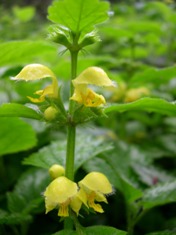
General description
Fast-growing perennial ground cover that may be either trailing or upright depending on conditions. Yellow archangel, also known as yellow Lamium, is very competitive and fast-growing in the forest habitats of western Washington and western British Columbia. When it is dumped with yard waste or escapes from intentional plantings, it spreads quickly into forested areas and out-competes native understory plants.
Legal status in King County, Washington
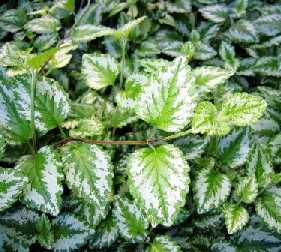
Yellow archangel is a non-regulated Class B noxious weed in King County. Control is recommended but not required. Yellow archangel is also on the state quarantine list and can not be sold in the state of Washington. For more information on noxious weed regulations and definitions, see Noxious weed lists and laws.
Impacts and distribution
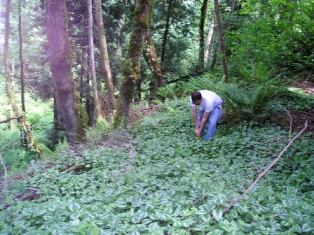
The variegated form of this species is a popular ornamental in garden beds and hanging baskets as well as a groundcover for shady sites. In Washington, yellow archangel has been reported as escaping in many western counties including San Juan County, Kitsap County, Pierce County, Thurston County, Snohomish County, King County and others.
When it escapes from residential plantings, it becomes invasive, forming dense patches. Yellow archangel outcompetes native plant species and provides poor food and shelter for native wildlife. It is found in ravines, greenbelts and forested parks as well as residential settings such as flower gardens, rockeries and ornamental boarders. Yellow archangel can grow in a wide range of conditions from full sun to full shade and is not deterred by most other plants.
Identification
Leaves are typically variegated with silvery-grey markings and are oval-shaped and toothed. Stems are square, leaves are opposite. Leaves are hairy and coarsely toothed. Flowers are small, yellow and tubular; they grow in pairs of clusters close to stems between leaves on flowering stems that are 1 to 2 feet tall. Distinctive, non-menthol and somewhat unpleasant odor.
Biology
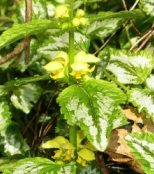
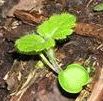
Fast-growing, herbaceous perennial. Spreads by stem fragments, rooting at nodes, and by seed. Flowers from April to June. The small yellow flowers are perfect and are pollinated by bees. Grows well in a variety of soil types from sandy to heavy clay and from acid to alkaline. Can grow in full shade (deep woodland), semi-shade (light woodland) and full sun. It prefers moist soil but can also tolerate dry shady sites and drought. Usually a groundcover but is also almost vine-like and can climb up and over low-growing plants and up onto stumps and other obstacles. Spreads readily from cuttings and root fragments. Plants also produce numerous seeds per stem, especially in sunny areas and abundant seedlings have been observed on sites that were cleared and adjacent to existing populations.
Control
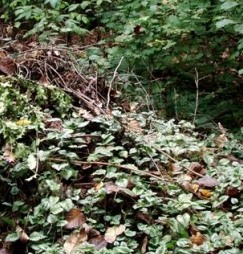
Prevention: Avoid planting near parks and natural areas or choose a different ground cover. If you already have this plant and would like to minimize its invasive nature, contain it in flower beds by regular trimming, or dig it up and replant into pots. Because yellow archangel spreads readily by stem cuttings, it is very important to discard plant material in such a way as to prevent spreading. Never dump clippings in parks or natural areas. Don't dispose of plants in backyard compost piles (okay to put into city provided "Clean Green" recycling bins since the yard waste is taken to a commercial composting operation).
Manual: Roots are not deep so plants can be hand-pulled or dug up. However, plants grow densely so hand-pulling is very labor-intensive and not very effective due the plant's ability to sprout from small fragments of root or stem, as well as its tendency to grow into and among desirable vegetation. To fully remove, plants must be pulled up by the roots, being careful to remove all root and stem fragments. This is easiest to do fall through early spring. Sift through soil carefully to find all roots and stem fragments. Cutting alone will not control this plant. Dense infestations can be controlled by sheet-mulching although it is crucial to control any escaping plants and to regularly check for holes in the covering material.
Chemical: Herbicides can be effective on yellow archangel, especially if combined with manual control and monitoring for surviving plants. Take care to avoid native vegetation by selectively spot-spraying. Choose a formulation that is appropriate for the site: either aquatic or terrestrial. Follow the label exactly as written and only use at the rate that is prescribed on the label. Treatment with triclopyr or glyphosate (or a mix of the two for better results) plus a surfactant appears to be somewhat effective although re-treatment is necessary. The herbicides work best when the plants are actively growing and are not wilted from drought-stress. Even small amounts of surviving plants will quickly fill back in if you do not follow up and control the surviving plants. Please contact our office or refer to the PNW Weed Management Handbook for more information on effective and safe use of herbicides.
Additional information on yellow archangel
- Yellow Archangel Best Management Practices (405 Kb)
- Yellow Archangel Weed Alert (204 Kb)
- Washington State Noxious Weed Control Board (external link)
What to do if you find this plant
Control of yellow archangel is not required in King County, but we would like to know where it is invading into wilderness areas so we can work to prevent serious impacts. If you see yellow archangel growing in or near wilderness areas, please contact our office. We are also gathering information on effective control methods. If you have had any success (or failures) controlling this plant, we would be interested in hearing from you.
Yellow archangel photos:
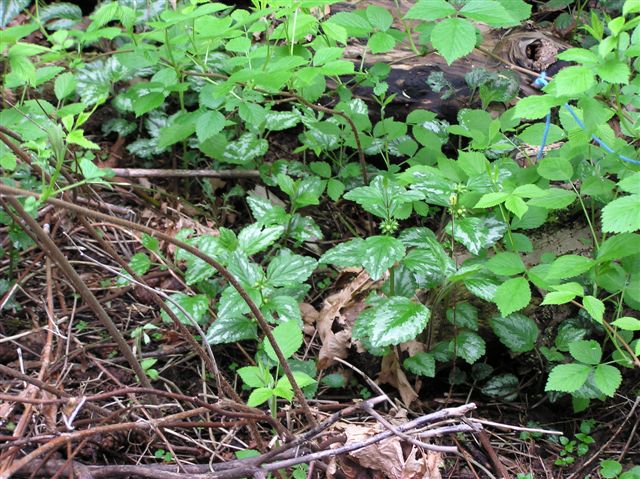
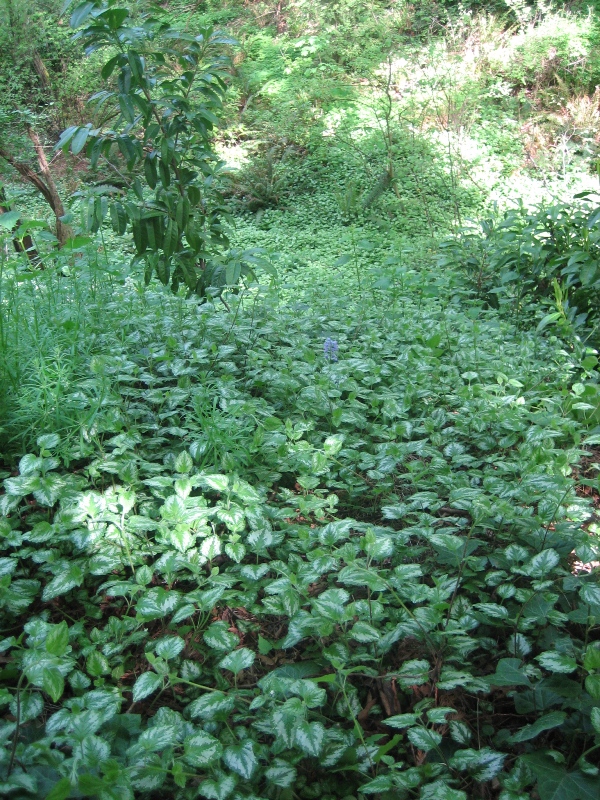
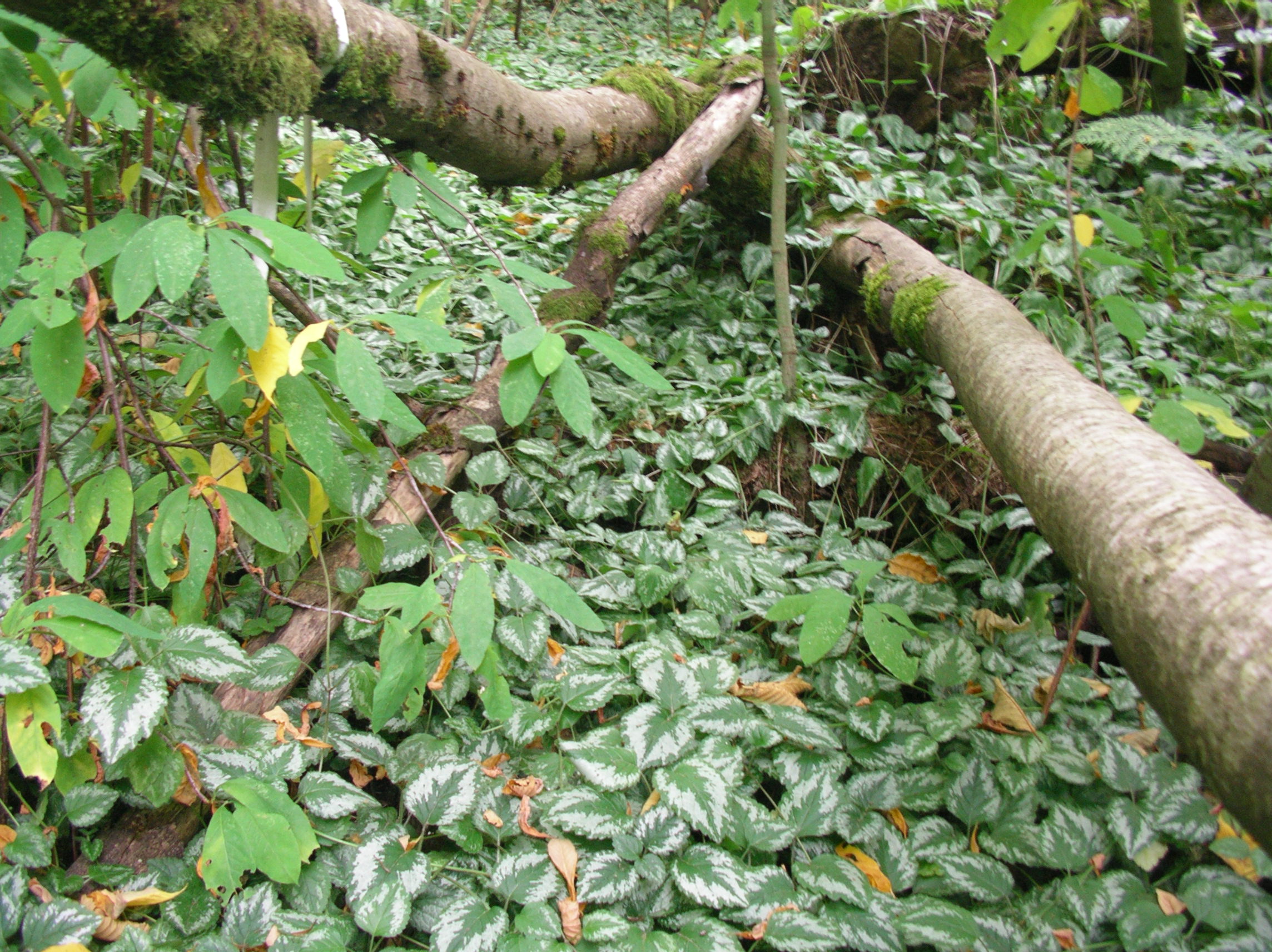
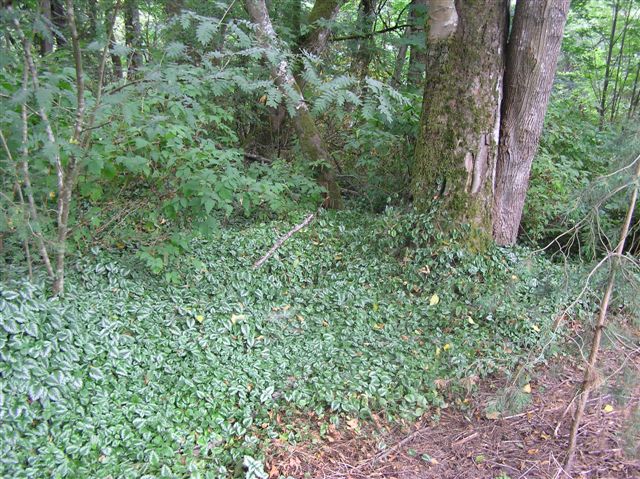
Related information
Related agencies
Program offices are located at 201 S. Jackson St., Suite 600, Seattle, WA 98104. To contact staff, see the Noxious Weed Control Program Directory, send an email, or call 206-477-WEED (206-477-9333).

 Translate
Translate